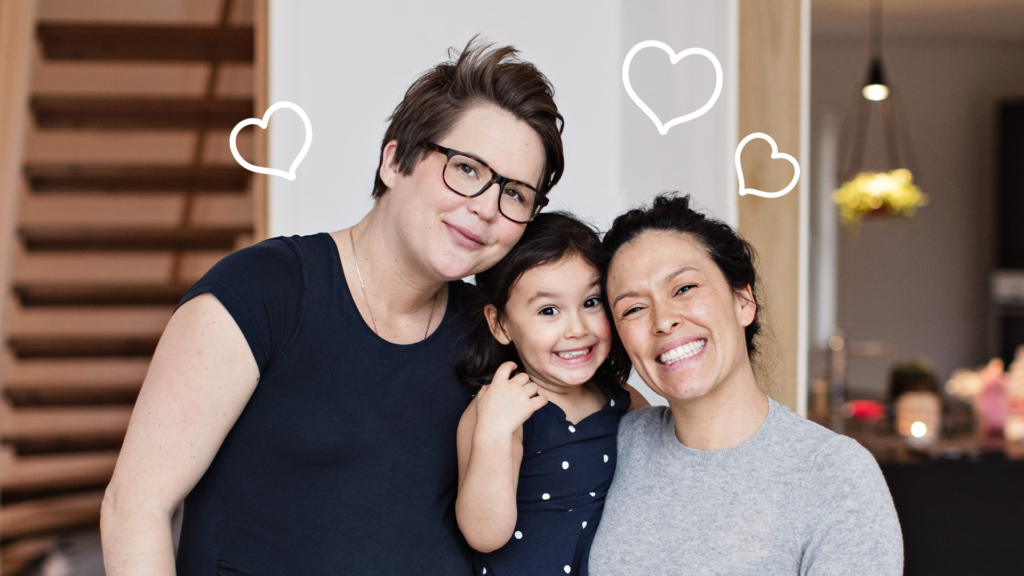Celebrating Different Kinds of Families
Written by Charissa Cheah, Ph.D., and Brittany Sommer Katzin, Ed.M.

What makes a family? In today’s world, children may define “family” through what they’ve encountered in their daily lives either in person or from things they’ve seen in books or on TV. Research has shown that kids between the ages of two and five years start to become aware of differences – such as gender, race and ethnicity, and disabilities – which all contribute to variations in family structures. That’s why teaching kids about different family structures is not only developmentally appropriate, but it helps them to understand that there are many ways to be a family!
Expanding your child’s understanding helps them appreciate and celebrate diversity, which is a fundamental skill for living in a multicultural society. Kids also develop empathy and an understanding for others who may have different experiences than their own.
Here are some tips on how parents can approach teaching young children about different family structures in a positive and inclusive way:

Have Open and Honest Conversations
You know your child best, and how they like to be approached with new information. When having conversations about what it means to be a family, try to bring in examples they’re familiar with from their own world – friends, family friends, extended family, etc. You can start by sharing that while families come in all shapes and sizes, the heart of the family is built on a foundation of love and respect. And encourage questions! When you listen actively and answer questions honestly, you are encouraging your child’s curiosity about different family compositions. Like many topics, your child might have follow-up questions days, weeks, or even months after you talk. Allowing for these questions to pop up anytime and anywhere only helps to foster their sense of curiosity and promote an appreciation for others.

Expose Kids to Different Kinds of Families
Introduce children to books and media that depict different kinds of families. When exploring stories that introduce various family compositions – such as books featuring adoption, same-sex parents, or blended families – discuss the unique qualities in each family and also try to relate them to your own family’s experiences whenever possible. Ask your child what they learned in the story and what differences and similarities they share with the characters. Having these books and media available can create a space to return to these conversations as natural part of your family’s daily life.

Celebrate Different Family Structures
When encountering different family structures, highlight the strengths of each one, such as the support and love shared within each type of family. Celebrate the fact that everyone’s family is unique, and we can learn different things from getting to know other families and their traditions. Getting to know different people and ways of living builds children’s empathy and respect towards others' experiences that may be different from their own.

Show That All Are Welcome!
Children learn from the grown-ups around them. When you demonstrate inclusivity and acceptance, your child will model that in their own interactions. Consider the diversity in your own friendship network of families. When you talk about different types of families and use positive and inclusive language, it shows your child how to embrace differences and celebrate all family relationships. This will help shape the values they start to form at a young age!

Try an Activity!
Use this collection of family photos to inspire a conversation with your child. You can ask them what they see, answer questions, and address any assumptions they may have about families that look different than yours.
After looking at photos, you can also have your child draw a picture of your family or other families they know (friends, cousins, neighbors) and talk about what makes each family unique.
Learning about and celebrating family diversity is an ongoing process that benefits from continued open conversations and encouragement of questions. What truly makes a family remarkable is the boundless love and care shared between its members. By embracing and promoting inclusivity, you help your child develop a positive attitude towards the diverse people and family structures they will encounter throughout their lives.
See What Kids Learn with Noggin

Discover Your Child's Favorites

Give Noggin a Try
Kid-safe & ad-free
Accessible on multiple devices
New content added weekly
Downloadable books & games for offline play
Kid-safe & ad-free
New content added weekly
Accessible on multiple devices
Downloadable books & games for offline play


